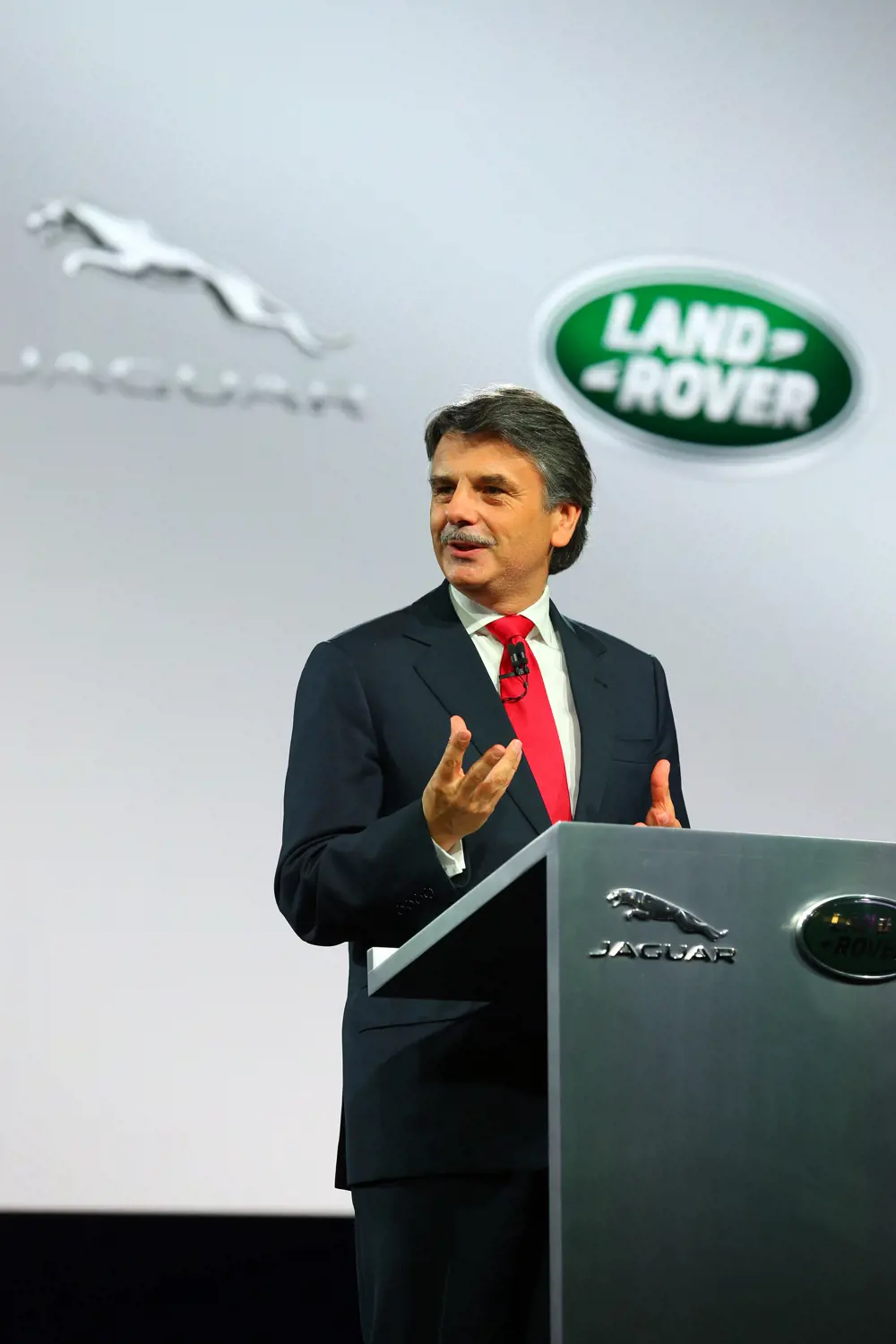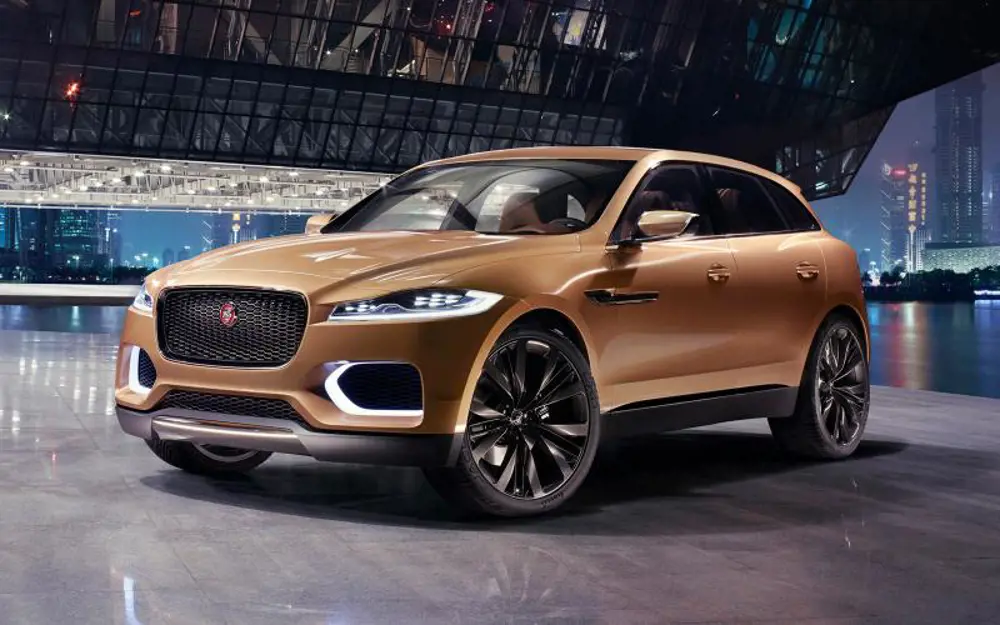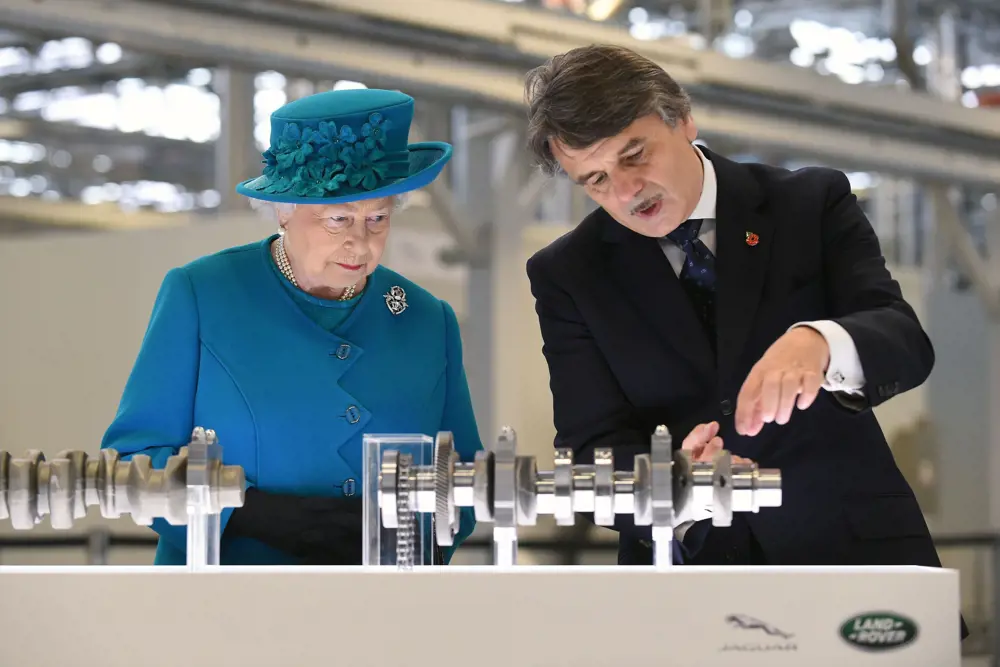
R&D investment makes good business sense
“Some of the most unbelievably creative engineers in the car industry are at Jaguar Land Rover. This combination of British design and creative engineering has helped us deliver really compelling products.” So says Dr Ralf Speth, enthusing about the company of which he has been chief executive since February 2010. He understands more about automotive innovation than most, having had a career that has taken in some of the world’s key car marques.
Talking to Speth in his functional glass-walled office in Coventry, you soon realise that cars, and the engineering that makes them happen, are in his blood, so much so that rather than just sitting and talking he insists on conducting a speedy tour of JLR’s crowded site. It ends with a visit to the design studio, next to the showroom of cars, where the company’s new models are developed and presented.
Speth drove us the short distance to the site in a vivid blue Jaguar XF. The site’s security system recognised the windscreen badge on Speth’s Jag and raised the barrier. The journey may have been short, but it allowed Speth to demonstrate that the XF has excellent acceleration and can navigate even small roundabouts at speed.
Modist motorist
It turns out that, while Speth will talk enthusiastically about driving cars and their engineering and design, he will not talk about himself. “It is not about my personality,” he says at the start of the conversation. “We can talk about Jaguar Land Rover, about business, or whatever. However, my personal life is not important.” This may explain why Speth has a lower media profile than most heads of car businesses.
It turns out that Speth’s reluctance to talk about himself is part of his character. As Lord Kumar Bhattacharyya FREng puts it, “That’s the sort of mentality he has.” Bhattacharyya should know; he set up the Warwick Manufacturing Group (WMG) at Warwick University, not far from Jaguar’s Coventry base of operations in the early 1980s. WMG has been a centre for automotive R&D for many years and a long-time collaborator with JLR under its various owners.
When I was looking for a new CEO for JLR, I had no hesitation in recommending [Dr Ralf Speth] for the job
Lord Kumar Bhattacharyya FREng
Bhattacharyya was also instrumental in bringing Tata to JLR, and Speth to the company. Bhattacharyya already knew Speth from his days at BMW. Speth forged links with WMG that have become increasingly important to JLR. The company is, says Bhattacharyya, the largest investor in the university and WMG and was involved in the creation of the National Automotive Innovation Centre where much of JLR’s R&D happens.
“When I was looking for a new CEO for JLR, I had no hesitation in recommending him for the job,” says Lord Bhattacharyya. He describes Speth as “very humble” and a very good engineer who pays attention to detail and design and finance. “He isn’t the archetypal British manager.” He is, though, “the sort of CEO that British industry ought to have”.
Another of Speth’s skills, says Bhattacharyya, is that “he has an empathy with people”. For example, he is good at communicating with students. “He doesn’t shout.” Even walking around the site elicits waves and greetings from a group of workers returning from lunch.
Speth extended his knowledge of other sectors when, in a rare move for a car industry boss, he followed his mentor at BMW, Wolfgang Reitzle, and became vice president of operations at the Linde Group, in the energy and gas supply business. At Linde, Speth’s interests took in very different vehicles, such as forklift trucks. These were a good test-bed, he said, for the use of hydrogen as an energy carrier.
Speth’s return to the UK followed another upheaval in the ownership of premium car marques. In 2008, the Tata Group bought JLR from Ford. The following year, prompted by Bhattacharyya, Tata brought Speth back into the car business. It took some effort to persuade him, says Bhattacharyya, but Speth eventually agreed to return to the UK as JLR’s CEO at the beginning of 2010, just when the global financial meltdown was in full swing and global car sales plummeted.
Tata’s acquisition brought the Jaguar and Land Rover marques together under the same roof, unencumbered by other global brands.

Dr Ralf Speth FREng was at the 2012 Paris Motor Show to launch the Range Rover, the world's first SUV with an all-aluminium body structure
New technologies
JLR doesn’t have to find new ways of packaging old technologies. “We have got an opportunity to start – for the new Jaguar XE for instance – with a clean sheet of paper, and to bring in materials technology and electronic technology,” says Speth. There are, however, limits to what he can do with his blank sheets. As Speth himself says when asked about what is more important, designing cars or ensuring that the company can make them, his reply reminds us that he is also head of a large and growing company that has to make money. “If you ask me as an engineer, and only as an engineer, not sitting in this chair, then I say I have to make sure that the technology, whatever we do, is designed in a way that is safe, absolutely safe for all of our customers, and that it also works, that it is reliable. If you define success in a wider way, then I have to say that we have to compete internationally against the big competitors in the premium segment.” In other words, engineering success has to go hand in hand with commercial success.
To get the right mix of engineering, JLR has had to add to its engineering portfolio. Like everyone else, JLR has been testing electric vehicles, which requires chemists with expertise in batteries. Electronic systems, too, are increasingly important in cars, so JLR built up a growing electronics division, and Speth has hired some industry heavyweights to work in the area. The company has also set up a joint venture with Intel and a research base in Oregon.
Why does a company like JLR need in-depth expertise in these areas of engineering? Can’t it just tap into the companies that supply the hardware and systems? “The idea that the car industry only throws everything together is nice, but you need hundreds of people just to organise the integration of all of these different pieces.” As Speth sees it, “in a car you get all of these technologies in the most complex consumer product on earth. You need the expertise to talk to your suppliers, to talk to research, and to combine all of these technologies.”
Technology in general is changing rapidly, says Speth, especially in the automotive industry. That is a great opportunity not just to catch up but to overtake the competition. One area of technological change is in drive trains, the engines and moving parts that propel cars. In all, JLR has invested around £1.3 billion in a new family of engines, with £500 million for a new factory in Wolverhampton that has an engine testing centre alongside manufacturing and assembly halls – and started turning out its first engines earlier this year.
Technology in general is changing rapidly, says Speth, especially in the automotive industry. That is a great opportunity not just to catch up but to overtake the competition
The company can afford to invest in this plant and the new models, because JLR is more profitable than it has been for years. Speth pounces on the word profit. “Why don’t you ask me how much money we spent? We make money,” says Speth, “but that is only one side of the coin. I can only spend money if I have earned it. It is far better to talk about cash and free cash flow.” This is what pays for all that investment and the company’s growing workforce. “We have added more than 17,000 people in the course of the last five years.” The latest announcement, in January, was for 1,300 new jobs at Solihull to support the company’s expertise “in aluminium and lightweight technologies”. In all, the workforce has grown by a third over the past four years.
Speth points out that R&D is another major investment area for JLR. In 2013, for example, the company invested around £3 billion in the product creation process. “I guess we are the biggest R&D investor in the UK in the automotive business.”
Jaguar Land Rover has taken a new approach to R&D that builds on Speth’s experience of how German car makers operate. They all work closely with local universities, and many of those universities have considerable experience in automotive engineering. “Universities like Munich or Aachen are famous for their automotive research,” he explains. “In the UK there are many universities doing very different things, but hardly anybody with a critical mass so that they really can generate a stream of innovations.”
One of the few universities in the UK that does have that critical mass is Warwick and WMG, thanks in large part to Bhattacharyya’s influence. It isn’t just R&D that the company gets from Warwick; the university also runs a bespoke engineering degree for the company’s staff. The university’s expertise and proximity to JLR’s operations base in the Midlands has made it a natural partner, so much so that the company is moving its R&D to a new building alongside WMG. The new National Automotive Innovation Centre (NAIC) is a government-backed joint venture between Jaguar Land Rover, Tata Motors European Technical Centre and WMG. “It will be, hopefully, a really important centre of the automotive industry in the future for the UK,” says Speth.

Jaguar’s first ever Sports Utility Vehicle will be called the F-Pace when it goes on sale in 2016. The car will make its first official appearance at the Frankfurt Motor Show in September this year. It is expected that there will be 2.0-litre turbo diesel and 2.0 turbocharged petrol engines - both from the new Ingenium engine family
WMG has also already delivered significant changes to JLR’s technology, says Speth. For example, the move to aluminium for the new Jaguar XE leant heavily on WMG’s expertise in manufacturing with the metal. This will be the first time that a car in this sector has had an aluminium body, a move that, says Speth, brings significant environmental gains. Not only is the car lighter, but around half of the metal used is from recycled material.
Talk of aluminium brings Speth to another hot topic for car makers, finding ways to make vehicles ‘climate friendly’. Speth’s view is that with aluminium bodies, better engines and other changes, over their lifetime, conventional vehicles can be more climate friendly than electric vehicles. Governments, however, seem to have decided that electric vehicles are the way to reduce CO2 emissions, and subsidise their use. “I am against this kind of looking for solutions and subsidising electric vehicles,” says Speth. While he is not averse to electric vehicles – there are charging points in the parking spaces alongside his Jaguar XF – he points out that, with pressure on electricity supply during periods of high demand, the UK hardly needs new markets for electricity. “It is just stupid”, Speth complains, to promote electric vehicles. It would be better, he believes, for governments to set goals for emissions and energy use and then to leave the industry to develop technologies to hit those targets. As he puts it, “give science and give technology an opportunity to develop the right solutions”.
To a certain extent, the government is travelling some way down this road. It is putting money into another research centre not far from JLR’s NAIC at WMG where researchers will develop those technologies. The Advanced Propulsion Centre (APC) is the ‘hub’ for a new industry-wide initiative, a 10-year, £1 billion industry and government commitment to the development of what Speth describes as “CO2-friendly drivetrains”. The centre will also conduct research with JLR into manufacturing technology for electric motors.

HRH The Queen is shown engine parts by Dr Speth during a tour of the newly-opened Jaguar Land Rover Engine Manufacturing Centre in Wolverhampton – November, 2014 © Joe Giddens/Press Association Images
Speth sees the government’s support for the APC as a sign that it is moving in the right direction in its support for manufacturing in the UK. He points out, though, that Innovate UK, formerly the Technology Strategy Board, the organisation behind these moves, has nothing like the budget of its German equivalent. “Overall, Fraunhofer spent last year £1.7 billion [€2 billion], and how much is TSB’s budget? £400 million?” In general, the UK lags in R&D spending, says Speth. “At the end of the day, it goes back to the overall spending on R&D as a percentage of GDP. The UK is nowhere near competitive against other similar-sized nations. Not in absolute terms, not in relative terms.”
In relative terms, he adds, even Slovakia beats the UK. The numbers bear him out: the UK invests 1.8% of GDP on R&D, in the US it is 2.7%, Germany 2.8% and South Korea 4%.
The state of flux in car technology means that “even small companies can do very very innovative things, because nearly everybody starts from scratch"
Support for R&D is clearly one way in which governments can encourage manufacturing. There are just so many things going on in automotive engineering that no company can cover everything, which makes centres like the APC so valuable. JLR may be the biggest spender on R&D in the UK but it is, says Speth, not a big company in comparison with the big international players. “It’s clear that we have to prioritise our resources.” This is why he is keen to work in collaboration with small companies and with universities. The state of flux in car technology means that “even small companies can do very very innovative things, because nearly everybody starts from scratch."
Evolutionary catch up
In conversation, Speth sometimes describes JLR as a “small company” in car-making terms. If the company’s recent progress is anything to go by, he may have a point about the opportunities for relative “minnows” in the automotive industry. While Speth accepts that others may see the recent performance of JLR as a ‘turnaround’, it isn’t a word he uses: “I see it as evolutionary catch-up.” With JLR setting up manufacturing operations in China and other countries, perhaps that catch-up will accelerate. If it does so, it will partly be on the back of the British engineering and design that so appeals to Speth.
Others may describe Speth as the understated German who is quietly setting about ambitious growth plans for the company; but he is more likely to want to pass on the glory. “If you have a success, there are a lot of people crucial to making this happen.”And this approach seems to go down well among JLR’s engineers. One long-time engineer reports that he has never had to work so hard, then again, he reports that he has never been so happy in his work. Bhattacharyya says that Speth also puts in long hours. Speth may also be pleased, but he isn’t letting on.
***
This article has been adapted from "Dr Ralf Speth FREng", which originally appeared in the print edition of Ingenia 63 (June 2015).
Contributors
Michael Kenward OBE
Author
Keep up-to-date with Ingenia for free
SubscribeRelated content
Design & manufacturing

Super cool(er)
Welsh startup Sure Chill has developed a cooler that uses the properties of water to keep its contents cool for around 10 days without electricity. This is ideal for storing items such as vaccines where electricity sources are unreliable.

Steel can arise from the ashes of coal
Thousands of people were laid off in the UK steel industry in 2015 and there are pessimistic future forecasts. Professor Sridhar Seetharaman of the Warwick Manufacturing Group argues that smaller, flexible steel mills implementing new technology would better cope with fluctuating global trends.

Integrating metrology in business and academe
Professor Jane Jiang’s interest in measuring began when she worked on a bus production line in China. She found that the best way to improve quality, consistency and productivity was through metrology, the science of measurement. Today, she runs the UK’s largest metrology research group.

Intelligent prosthetics
Prosthetic limbs can help many amputees regain independence and mobility. The Linx limb system, winner of the 2016 MacRobert Award, developed by Blatchford, has smart robotics that constantly monitor and adapt to movement, making walking and movement more natural for lower-leg amputees.
Other content from Ingenia
Quick read

- Environment & sustainability
- Opinion
A young engineer’s perspective on the good, the bad and the ugly of COP27

- Environment & sustainability
- Issue 95
How do we pay for net zero technologies?
Quick read

- Transport
- Mechanical
- How I got here
Electrifying trains and STEMAZING outreach

- Civil & structural
- Environment & sustainability
- Issue 95